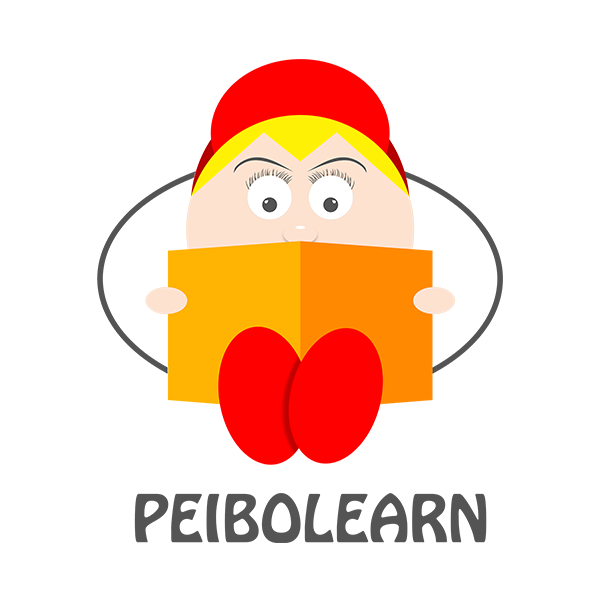Cómo empezar a aprender francés
Como puedes imaginar, el primer paso para aprender un idioma es conocer su alfabeto. Repasemos el alfabeto francés, letra por letra.
Por cierto, esta es la guía que más me ha ayudado a la hora de empezar a aprender francés por mi cuenta 😉
Las letras con un asterisco (*) no pertenecen al alfabeto en sí, sino que representan diferentes sonidos que deben ser resaltados y tratados por separado.
Los símbolos de pronunciación son lo más precisos posible, pero recomiendo que escuches los audios para familiarizarte con los diferentes sonidos. Lo he grabado yo mismo en una pronunciación francesa (de Francia) lo más estándar posible.
Espero que te sea útil 😊
| Letter | Name | Pronunciation | Examples | Phonetics | Traduction |
| a | a | [a] as in calm. | maman | [ma’maɲ] | mom |
| à | a grave | Used primarily to distinguish homophones: ‘à’ (“to”) vs. ‘a’ (“has”). | à | [a] | to |
| â | a circumflex | Indicates the sound /ɑ/ but the distinction a /a/ vs. â /ɑ/ tends to disappear in Parisian French, so they are both pronounced [a]. Most often, it indicates the historical deletion of an adjacent letter (usually an s or a vowel): castel > château. It has also come to be used to distinguish homophones. | château | [ʃa’to:] | castle |
| eau / au* | – | [o] as in poll. | eau au | [o:] [o] | water to the |
| æ | a in ae | This ligature is rare, appearing only in some words of Latin and Greek origin like tænia. It generally represents the vowel [e], like ‘é’. | tænia | [‘tenja] | tapeworm |
| b | bae | [b] as in boot. | bel | [bel] | beautiful |
| c | sae | [s] before ‘e – i – y’. [k] initially and medially elsewhere and finally. | ce croire | [sə] [kguag] | this to believe |
| cc* | – | [ks] before ‘e – i – y’. [k] elsewhere. | accent | [ak’soɲ] | accent |
| ch* | – | [ʃ] as ‘sh’ in shot or [k] as in key. | chat chaotique | [ʃa] [kao’tik] | cat caotic |
| ç | sae – cedilla | It is pronounced /s/ rather than /k/. The cedilla is only used before the vowels a, o or u. | français | [fgɔn’se:] | french |
| d | de | [d] as in dog. No sound when it is at the end. | devoir pied | [de’vwa:] [pje] | must / to owe foot |
| e | ea | [e] ouverte as in pet. | essence | [e’sons] | essence |
| ai* | – | [e] ouverte as in pet. | mais | [me] | but |
| é | ea acute | Indicates uniquely the sound [e]. An é in modern French is often used where a combination of ‘e’ and a consonant, usually s, would have been used formerly: escouter > écouter. | écouter | [ekü’teg] | to listen |
| è | ea grave | Indicates the sound [ε] in positions where a plain e would be pronounced as [ə]. Many verb conjugations contain regular alternations between è and e; for example, the accent mark in the present tense verb lève [lεv] distinguishes the vowel’s pronunciation from the [ε] in the infinitive, lever [ləve]. | lève | [lεv] | he / she raises |
| ê | ea circumflex | Indicates the sound [ε]. In Belgian French, ê is pronounced [ɛː]. Most often, it indicates the historical deletion of an adjacent letter (usually an s or a vowel): feste < fête. | être | [εtg] | to be |
| ë | ea with dieresis | Indicates that the vowel is to be pronounced separately from the preceding one. | Noël | [no’e:l] | Christmas |
| f | ef | [f] as in foot. | français | [fgɔn’se:] | french |
| ph* | – | [f] as in foot. | photo | [fo’to] | photo |
| g | ʒe | [ʒ] before ‘e – i – y’. [g] initially and medially elsewhere. No sound at the end. | manger glace long | [mɔŋ’ʒeg] [glass] [loŋ] | to eat ice long |
| gn | – | [ɲ] as in cognac. | champagne | [ʃam’paɲ] | champagne |
| h | ash | No sound. | haut | [o:] | height |
| i | ee | [i] as ‘y’ in clay. | lit | [li] | bed |
| î* | ee circumflex | Indicates the sound [i:]. Most often, it indicates the historical deletion of an adjacent letter (usually an s or a vowel): isle > île. It has also come to be used to distinguish homophones. | île | [i:l] | isle |
| ï* | ee with dieresis | Indicates that the vowel is to be pronounced separately from the preceding one. | naïve | [na,’i:v] | naive |
| j | ʒee | [ʒ] as ‘s’ in pleasure. | je | [ʒœ] | I (me) |
| k | ka | [k] as in kilo. | kiwi | [‘kiwi] | kiwi |
| l | el | [l] as in love. | laver | [la’væg] | to wash |
| m | em | [m] as in me. | mère | [mεg] | mother |
| n | en | [n] as in neck. | nerveaux | [neg’vœ:] | nervous |
| o | o | [o] as in poll. | école | [e’ko:l] | school |
| ou* | – | [oo] as in tool. | ouvrir | [oo’vgi:] | to open |
| ô* | o circumflex | Indicates the sound [o:]. Most often, it indicates the historical deletion of an adjacent letter (usually an s or a vowel): hostel > hôtel. It has also come to be used to distinguish homophones. | hôtel | [o:’tel] | hotel |
| œ* | o in ee | [ö] as in German schön (beau). | sœur | [sœ:g] | sister |
| eu* | – | [ö] ‘œ’ or [ä] ‘æ’ as in German in Mädchen (girl). | bleu neuf | [blœ] [næf] | blue nine |
| eoi / oi* | – | [wa] | noir asseoir | [nwa:g] [a’swa:g[ | black to sit |
| p | pe | [p] as in play. | peur | [pœg] | fear |
| q | cu | [k] as in key. | cinq | [sɔnk] | five |
| qu* | – | [k] as in key. | quand | [kaɲ] | when |
| r | eg | [g] as in German Rot (red) but much softer. | rêve | [gεv] | dream |
| s | es | [s] initially. [z] elsewhere between two vowels. No sound finally. | penser rose dans | [pɔn’seg] [goss] [doŋ] | to think rose in |
| t | te | [t] as in cat. | toucher | [too’ʃeg] | to touch |
| th* | – | [t] as in cat. | théorème | [teo’rεm] | theorem |
| u | oo | [ü] ‘ue’ as in German, Tür (door). | tu | [tü] | you |
| ù* | oo grave | [ü] ‘ue’. Used primarily to distinguish homophones: ou (“or”) vs. où (“where”; note that the letter ù is used only in this word). | où | [ü] | where |
| û* | oo circumflex | Indicates the sound [ü] ‘ue’. Most often, it indicates the historical deletion of an adjacent letter (usually an s or a vowel): seur > sûr. It has also come to be used to distinguish homophones: du (“of the”) vs. dû (past participle of devoir = owed or must be done “to have to do something pending and mandatory”). | sûr | [sür] | sure |
| ü* | oo with dieresis | [ü] Indicates that the vowel is to be pronounced separately from the preceding one. The diaeresis on u appears in the Biblical proper names such as Saül. | Saül | [sa,’ül] | Saul |
| v | ve | [v] as in vacuum. | vélo | [ve’lo] | bike |
| w | double ve | [w] as in water. | whisky | [‘wiski] | whisky |
| x | eex | [ks] initially. [gz] medially elsewhere. | six | [siks] | six |
| y | greek ee | y’ in French is another vowel. [i] elsewhere. [j] before vowel. | cyclone yeux | [si’cloɲ] [jö] | cyclone eyes |
| ÿ* | greek ee with dieresis | Indicates that the vowel is to be pronounced separately from the preceding one. Only occurs in some proper names and in modern editions of old French texts. | Aÿ | [a,jü] | Aÿ |
| z | zed | [z] initially. No sound at the end. | zone chez | [zon] [ʃe] | zone somebody`s home |










